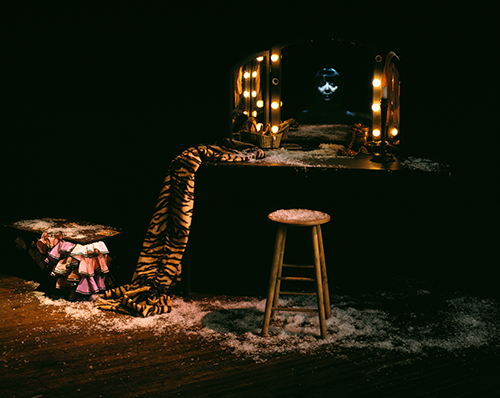Jewish American Heritage Month: Eleanor Antin
Eleanor Antin was a pioneer in the use of multi-media during the Feminist Art Movement of the 1970s. The young counterculture of the 1960s in America challenged the values and policies of a male-dominated, capitalist society. Art movements of the period began to reflect the collapse of mainstream American art, which had been dominated by the male-dominated Abstract Expressionism. The period also marked the beginning of the Feminist Art Movement.

In celebration of Jewish American Heritage Month, our Art Historian and Image Curator, Karl Cole, has provided us with an inspiring artist and artwork to share with you. Read on to learn more about Eleanor Antin.
The 1972 formation of the Women’s Caucus for Art provided a forum to explore issues surrounding women artists and art history. The newfound confidence moved women artists to work in radical styles, media, and subject matter previously considered improper for them. One of the art forms previously dominated by men was performance and installation art. Eleanor Antin’s work provides a prototype for women who use performance art.
Antin was born Eleanor Fineman in New York (1935) and studied art, drama, and philosophy in college. She spent two years as a professional actress on stage and television (1955–1958). Her varied educational background is reflected in her body of work. Her earliest work included Dada-like paintings, installations of everyday household products, videotaped performances, and photographed “roguish novels.”
Antin delves into the history of numerous periods including her own Jewish heritage and Yiddish culture. This kind of work is reminiscent of Dada happenings staged in the early 1920s, but, unlike Dada, Antin’s work is not “anti-art,” but rather it is an attempt to create a unique artistic statement.
About the Image: Antin has masqueraded in many roles in her performances and videos, ostensibly to expose the many sides of her own personality. Her most famous, and frequently performed, persona is that of Eleanora Antinova, a tragically overlooked black ballerina from the Ballets Russes of the early 1900s.
Appearing in numerous scripted and non-scripted performances as Antinova, Antin has blurred the distinction between her identity and that of her character. We see Antin’s own face in the dressing room mirror of this installation. This is part of a rich body of work detailing the real-life ballerina, which includes a fictitious memoir and numerous films, photographs, performances, and drawings in “An Artist’s Life as told by Eleanora Antinova to Eleanor Antin.”


Comments